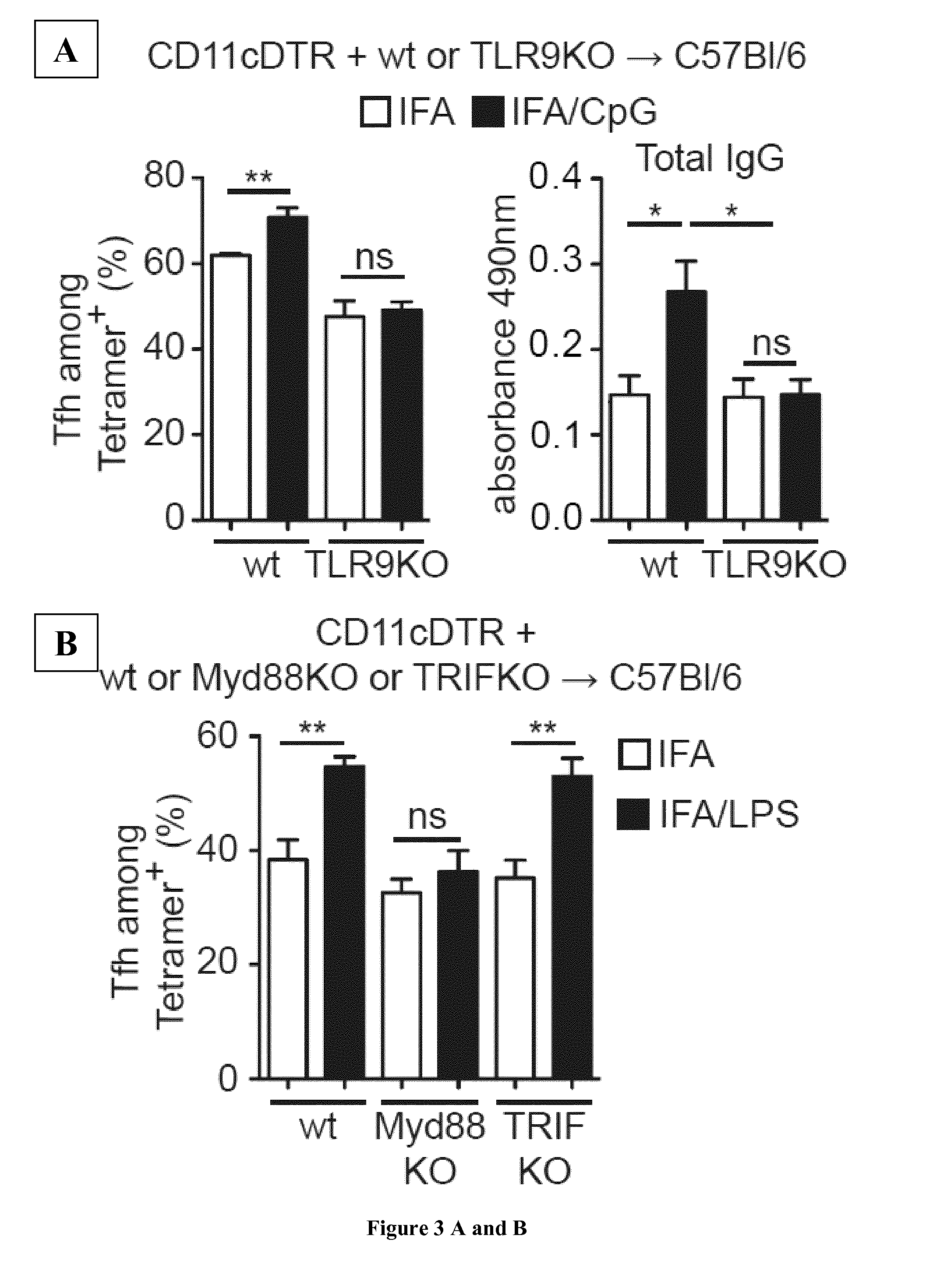Immunoadjuvant Compositions and uses Thereof
a technology of adjuvants and compositions, applied in the field of adjuvant compositions, can solve the problems of inability to improve vaccine efficacy, defective cd4+ t cell recruitment and retention within gc as differentiated tfh cells, and inability to enhance the effect of tlr agonists in classical adjuvants, etc., to achieve the effect of promoting high-affinity b cell immunity, enhancing ag-specific
- Summary
- Abstract
- Description
- Claims
- Application Information
AI Technical Summary
Benefits of technology
Problems solved by technology
Method used
Image
Examples
example
Material & Methods
[0124]Mice
[0125]C57Bl / 6 were from Janvier, JHT were kindly provided by Dr S. Fillatreau, TLR9KO and TRIFKO by Dr E. Barhaoui, IL-6K0 by Dr H. Coppin, CD11c-DTR and CD45.1 C57Bl / 6 by Dr S. Guerder, MyD88KO and CX3CR1KO by Dr R. Burcelin and CCR2KO by Dr T. Walzer. All mice were maintained under pathogen-free conditions at CHU Purpan. All experimental mice were females used at 8-16 weeks of age and were age-matched (within 2 weeks) within experiments. The Institutional Animal Care and Use Committee reviewed and approved all experiments.
[0126]Reagents
[0127]Ovalbumin protein (OVA) was from Sigma-Aldrich, Ea52-68, Ea52-68-FITC, 1W1K were from Genecust. SAS and IFA were from Sigma-Aldrich, Alum and OVA-Alexa488 from Invitrogen, CpG, LPS and poly(I:C) were from Invivogen. For construction of microsphere-linked Ag, 0.5 μm of carboxylated green fluorescent latex microspheres were purchased from Polysciences (Warrington, Pa.). Protein or peptide were covalently linked to mic...
PUM
| Property | Measurement | Unit |
|---|---|---|
| body weight | aaaaa | aaaaa |
| affinity | aaaaa | aaaaa |
| strength | aaaaa | aaaaa |
Abstract
Description
Claims
Application Information
 Login to View More
Login to View More - R&D
- Intellectual Property
- Life Sciences
- Materials
- Tech Scout
- Unparalleled Data Quality
- Higher Quality Content
- 60% Fewer Hallucinations
Browse by: Latest US Patents, China's latest patents, Technical Efficacy Thesaurus, Application Domain, Technology Topic, Popular Technical Reports.
© 2025 PatSnap. All rights reserved.Legal|Privacy policy|Modern Slavery Act Transparency Statement|Sitemap|About US| Contact US: help@patsnap.com



